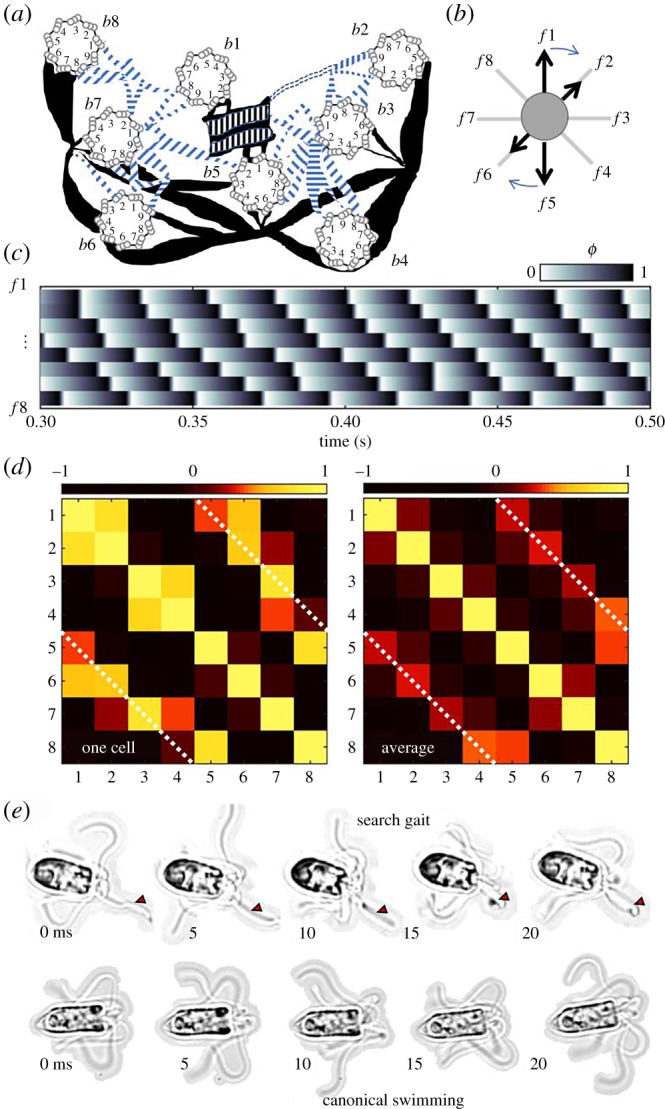Figure 5.

Pyramimonas octopus exhibits symmetry-breaking in both structure and movement. (a) Schematic (redrawn from [49]) of the basal apparatus comprising eight basal bodies (b1–b8) whence emanate the flagella (f1–f8). Thick and thin filaments couple the flagella at specific locations to produce the octoflagellate's unique rotary breaststroke (b). Stereotypical phase dynamics for the numbered flagella are displayed in (c). Cross-correlation matrices for one cell and group average (n = 8) both show strong synchrony between diametrically opposite flagella (d). (e) A small number of cells adopt a ‘search’ gait, in which a single flagellum (marked by the red arrow) is held extended in front of the cell (electronic supplementary material, video S10). Canonical swimming is also shown for comparison.
